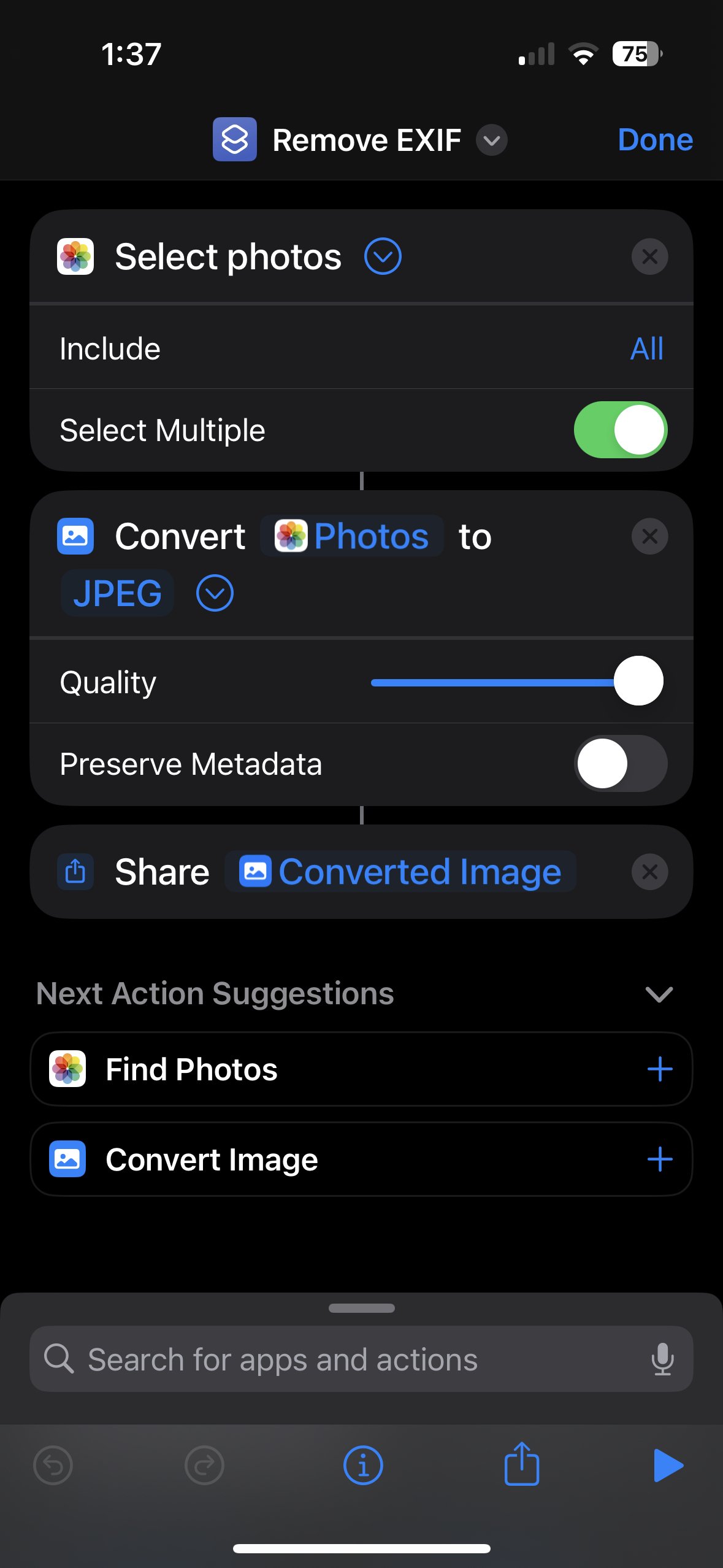I can scribble out identifying info (text, landmarks, faces) in an image, but I’ve heard images can have some geographic data. How do I remove that?
And video is a whole separate challenge - I don’t know how to edit video. Does video have other metadata like my location or stuff about my device? What’s some software good for beginners? How do you remove excess metadata with it?
Are there other considerations I should have?
(If there are step-by-step resources out there, please feel free to just link me to them.)
Thanks in advance!
exiftool might be, what you are looking for.
OP should be aware removing this data will often require you to change the orientation of the image. Its one of the problems with using exif data to store the orientation rather allowing the image to be seen the way its really stored. I made one of my daughters high school teachers furious when I pointed out why the images the kids were uploading were being saved ‘sidewase’ to use the teachers description. When she assured me the software vendor assured them it wasn’t anything they were doing and I showed her on the sites support pages where they addressed the issue. I also explained to my daughter the correct way to take the pictures with her phone so they looked the same after the exif data was removed. She told the rest of the kids and the problem largely went away.
You could always selectively remove the sensitive exif info while leaving the orientation intact, though. It just takes being slightly more competent at using the tool.
In this case it was a bunch of high school kids uploading their work in the form of an image to a… I wont say low effort but definitely low support pre-google learning website. I remember the python tool they were using just stripped all exif data and to be truthful don’t know it it had options to leave some of it intact. The real factor here is if the phone manufacturers, apple being one of them had bothered to fix the orientation of a image to its actual orientation and used the viewing software to orient it to the screen it wouldn’t have been a problem. Instead they used the exif data which guaranteed when the image was processed in any way that altered that exif data it would come out wrong unless it happened to have been taken in the correct orientation with the camera itself. Which wasn’t the natural orientation when taking a picture with a smart phone.
Honestly, it’s nice to hear that the developer considered the exif data and scrubbed it… even if they did it poorly.
People on the internet can be really creepy.
A person on the internet
Yup. Editing or deleting the exif data is the best way to go. If you just want to quickly remove location data, use a screenshot of the image.
exiftool -all= /path/to/fileEZ
ETA: Not sure what’s with the downvotes. I use this command all the time.
On Windows, right-click Properties on any image file and use “Remove Properties and Personal Information” in the Details tab.
If you have an iPhone you could make a basic shortcut to do that.

Make sure to uncheck “Preserve Metadata.”
Why convert to JPEG? Asking because I go out of my way to use the better quality HEIC (albeit proprietary).
Black out any mountain ranges or the geo guessers will know.
I use Gimp. There are versions for Linux, Mac and Windows.
Open the image. If it contains Exif rotation data, it will ask if you want to rotate it or leave it as-is. Choose to rotate it. It will also probably ask about transforming the color profile. Just say whatever to that as it’s not a huge difference.
Crop the image or do whatever, then choose “File > Export As”. You’ll get a filename dialog, where you can also specify the format in the extension of the filename, then “Export Image” dialog with a lot of options. Uncheck “Save Exif data” and “Save XMP data”, and click Export.
add a bunch of random text on the text you’re trying to censor, that’s my contribution.
edit: slight rewording
edit2: oh i recommend imagepipe for what you asked
For images, on Android you could use Imagepipe.
Once you’ve set it up, simply “share” the image to Imagepipe, it does its thing then automatically passes it on to whatever app you want - for example a messaging app for you to send on to others (it stores a copy of the image minus its metadata in an Imagepipe folder in your gallery for ease of access should you need it again).
For video, from memory I think mp3tag for Windows/Mac can remove metadata from some video formats
You’re right - most media formats have support for metadata, which can include all sorts of things depending on how the image is created. For instance, most phones have an option to add location data to photos.
A lot of identifiable info like location data is usually an option you can turn off. And there are a lot of tools to remove metadata from files. A quick search brought up this, which seems fairly reputable (and open source, which is usually good for sensitive stuff like this).





